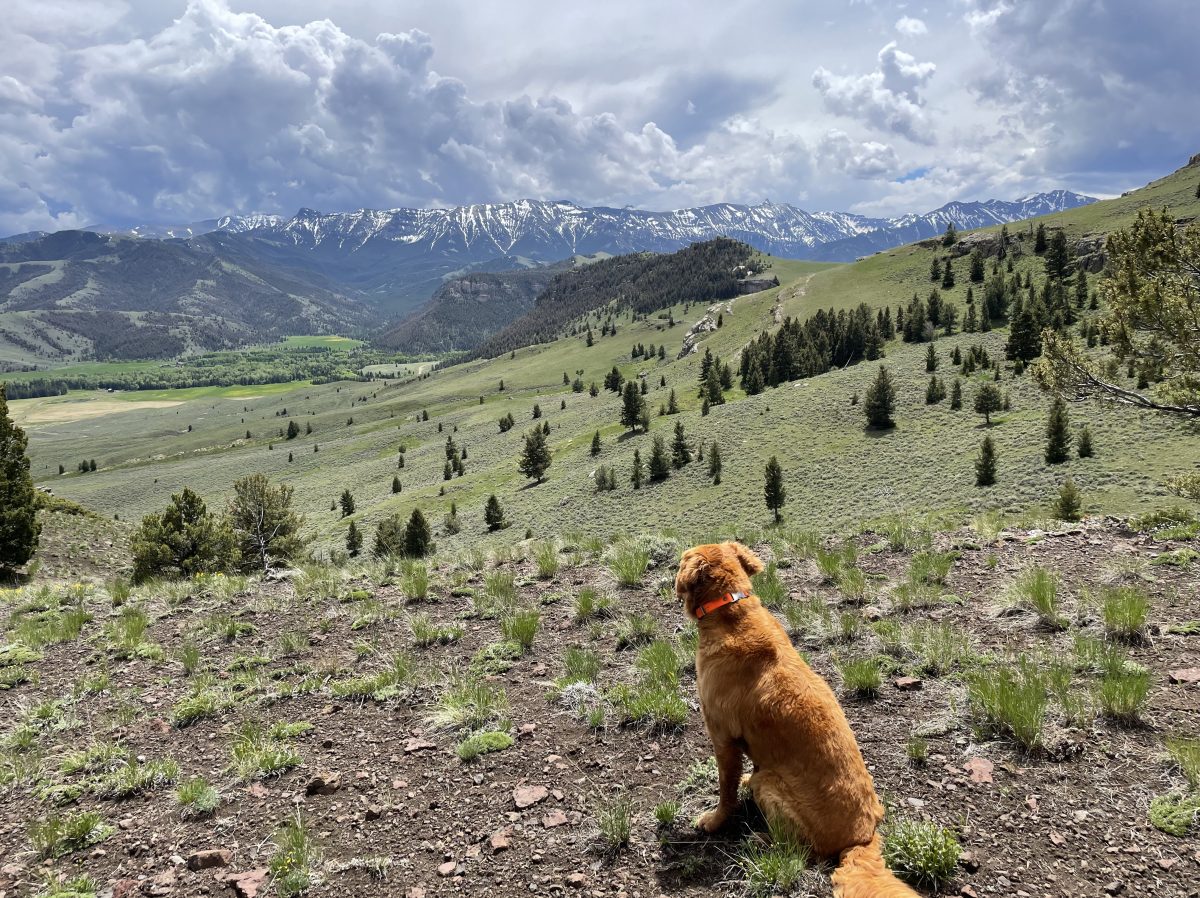In helping homeowners over the years deal in natural ways with small critters like moles and gophers, as well as larger animals like deer, I found that there is one necessary ingredient–the homeowner has to want to co-exist rather than resort to lethal controls.
That same principle applies to larger predators in the landscape such as cougars, wolves, bears, or coyotes. The wolf reintroduction has generated a lot of fear. But if we want wolves to remain in the landscape, then ranchers will need to learn new methods. I have always advocated that, just like the homeowners I helped and educated, ranchers need and deserve a helping hand. This should include public and private monies for education and training. Instead of ranchers just given a ‘kill tag’ or being reimbursed ad infinitum for predations, they need to be aided in new protection methods with the goal of incorporating those techniques into their regular routine.
There are several private organizations doing just that: working with ranchers to discover ways to protect their herds and flocks. Below is a fantastic informative video I hope you’ll watch. Well produced with the added benefit of wonderful scenery and wildlife footage, ‘A Season of Predators’ gives you a vision of where we must be headed if we are to have bears and wolves remain in the landscape.
One additional note I’d make: Although this video concentrates on wolf management, we, the public, are spending millions of dollars a year funding government killing of predators and ‘nuisance’ animals. This arm of the USF&W is called Wildlife Services and its main job, unlike its title, is killing predators. One local man who works for WS told me that he trapped and killed 400 raccoons last year for one farmer. He also had to kill dozens of feral cats as part of his job. Ironically, he was also killing the local coyotes that would have kept the raccoon and feral cat population in check. This is the kind of government subsidization that is ‘old school’. Instead of simply killing wildlife as well as throwing away all that money that not only doesn’t teach the farmer any practices, but doesn’t teach the local wildlife anything, Wildlife Services could have used those dollars exploring new methods and instructing this farmer in sustainable practices in co-existence.
Having worked with over-populations of deer in suburban areas, I know that deer damage can be controlled. For instance, deer actually are trainable. Does teach their fawns what to eat. Deer can be browsing on one type of flower in the landscape, but miles away won’t touch that plant but prefer another. Through a variety of means that don’t even include fencing, deer can be ‘taught’ not to eat a particular plant. As you’ll see in this video, wolves can be taught too, but it takes a bit more work than simply a trap, a gun, or a poison. This is the kind of ‘work’ where your psyche and body meld into the land. You’ll have some loss, but the goal is to minimize. You are working with the wild, not against it, and in doing so there is great pleasure and satisfaction, with the rewards being a feeling of oneness with the Land.

I’ve read with enthusiasm quite a few of your blogs. I love your passionate yet level-headed approach to this subject. So many don’t know how to temper how we feel with language that sounds reasonable to our listeners who may not see things the same way we do. I know you educate so many. I’m one of them, and I’m already in your camp! I just wanted you to know that the video on this page won’t play. Well, the ad will play, but not your video:)
Thank you so much for all you do for God’s created ones who are at the mercy of mankind, who are charged to care for them.
Lynn Ann
New Jersey
LikeLike
Hi Lynn, thanks so much for your encouragement and kind words. You don’t know how much it means to me as sometimes one just feels like they are speaking into the void when writing on the internet. try the video as a link http://vimeo.com/57660999 I think you can play it that way.
LikeLike
Hi Leslie,
I was so shocked to see my name listed in the left-hand column under recent comments, and completely surprised and speechless to click on it and be greeted with my own web page staring me in the face. In all our years of living and working with so many of the world’s forgotten ones, no one has ever done this. I am touched deeply. And so much of what you write about resonates with me and has since childhood. My love of animals started with dogs, cats, and horses, then to wildflowers and wild mammals. Growing up in New Mexico my dad took us out fishing and tracking. I would carry my plaster of Paris with me, along with a canteen and popsicle sticks for mixing, and I would come home with plaster casts of everything from jackrabbit to deer to bobcat tracks. The love for all things wild is deeply imbedded in my soul. I applaud your efforts, once again, to share yours with all of us.
Lynn Ann
New Jersey
LikeLike